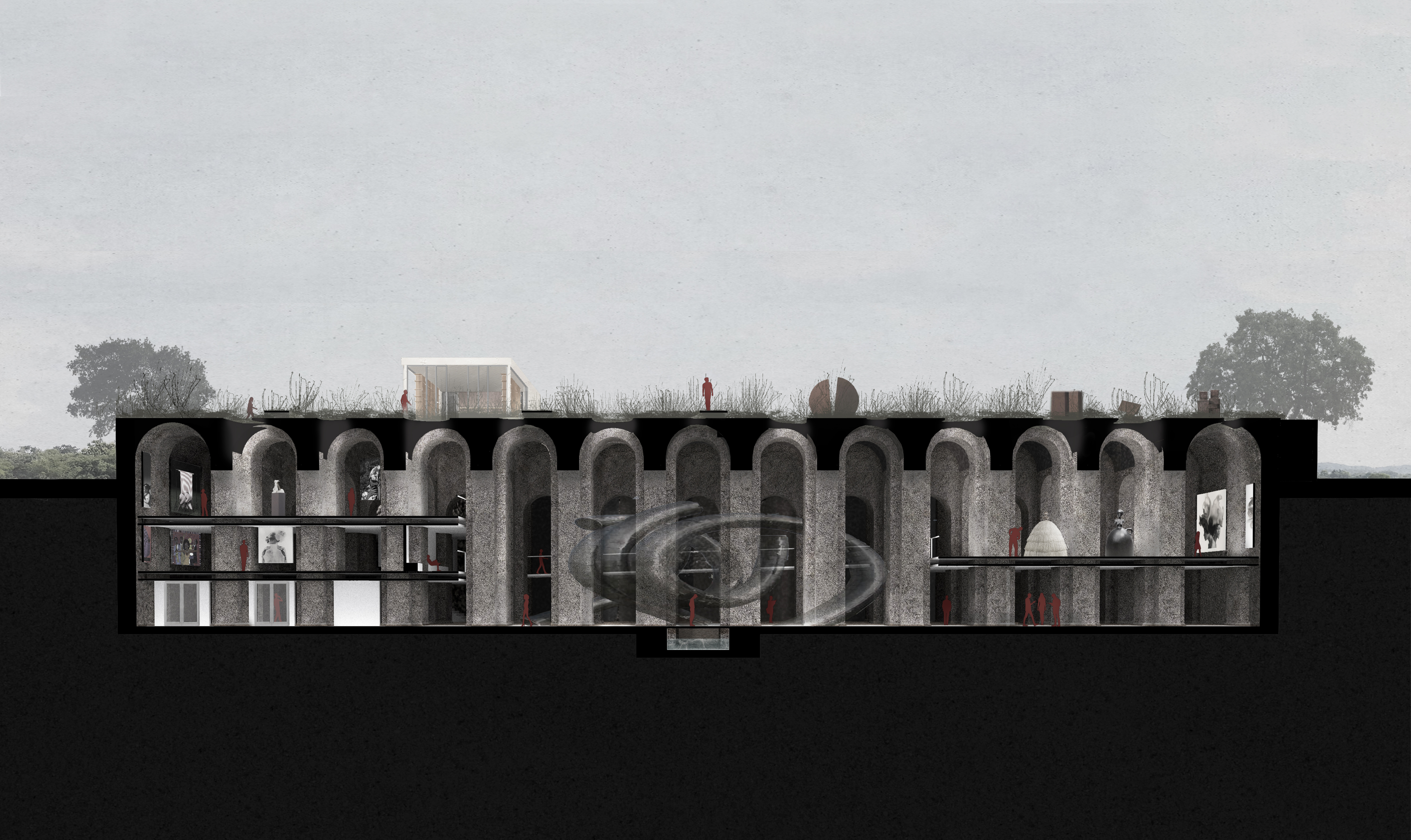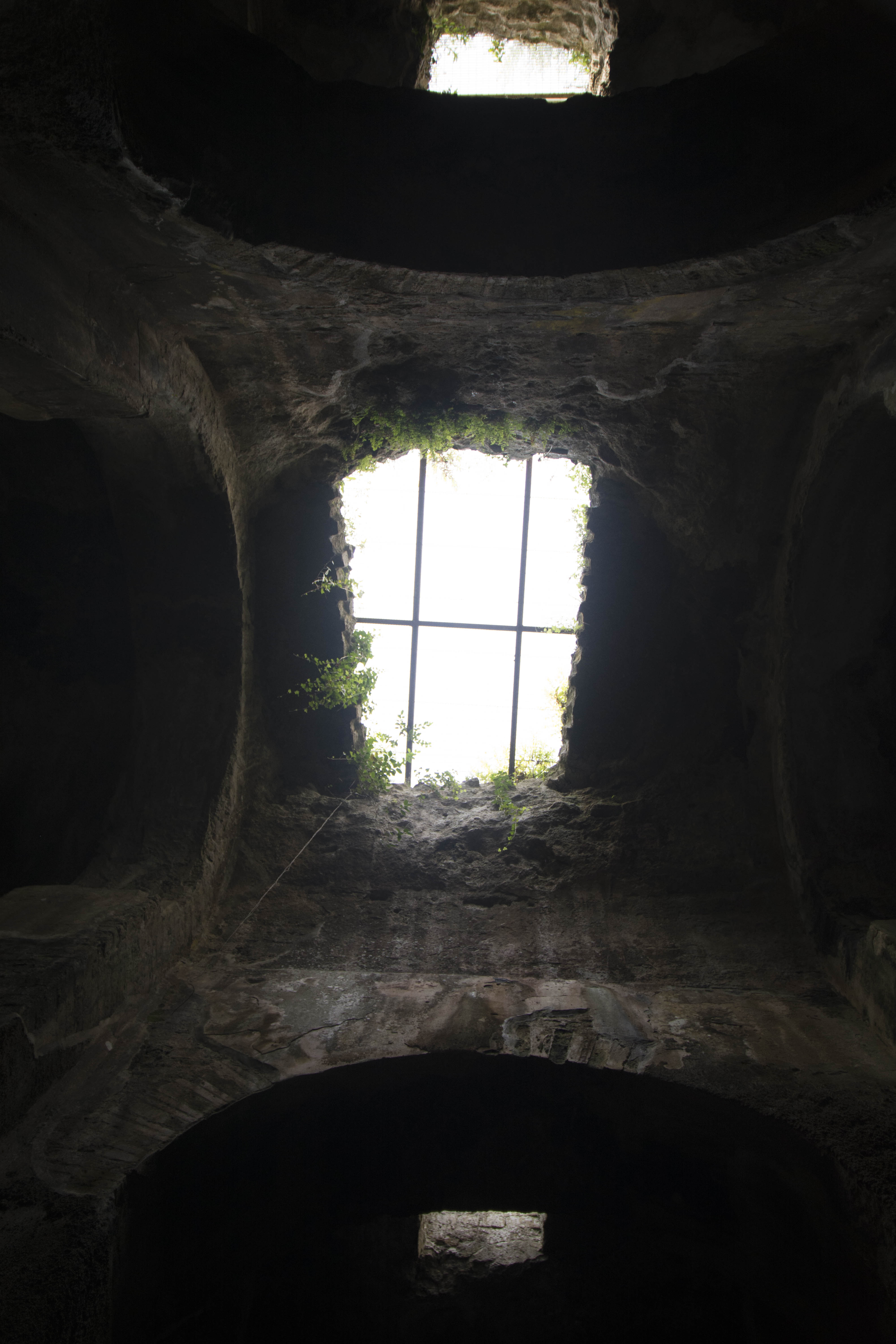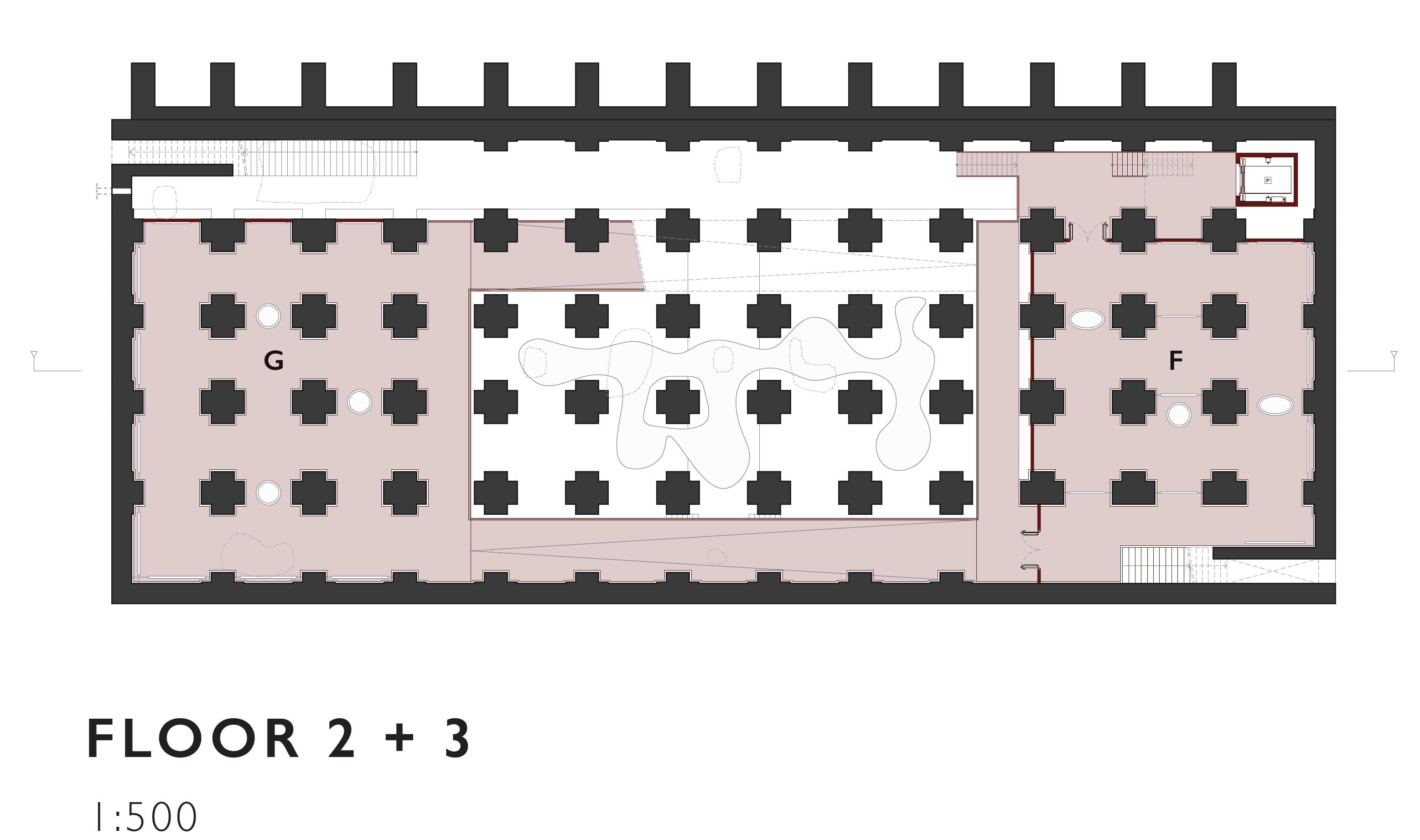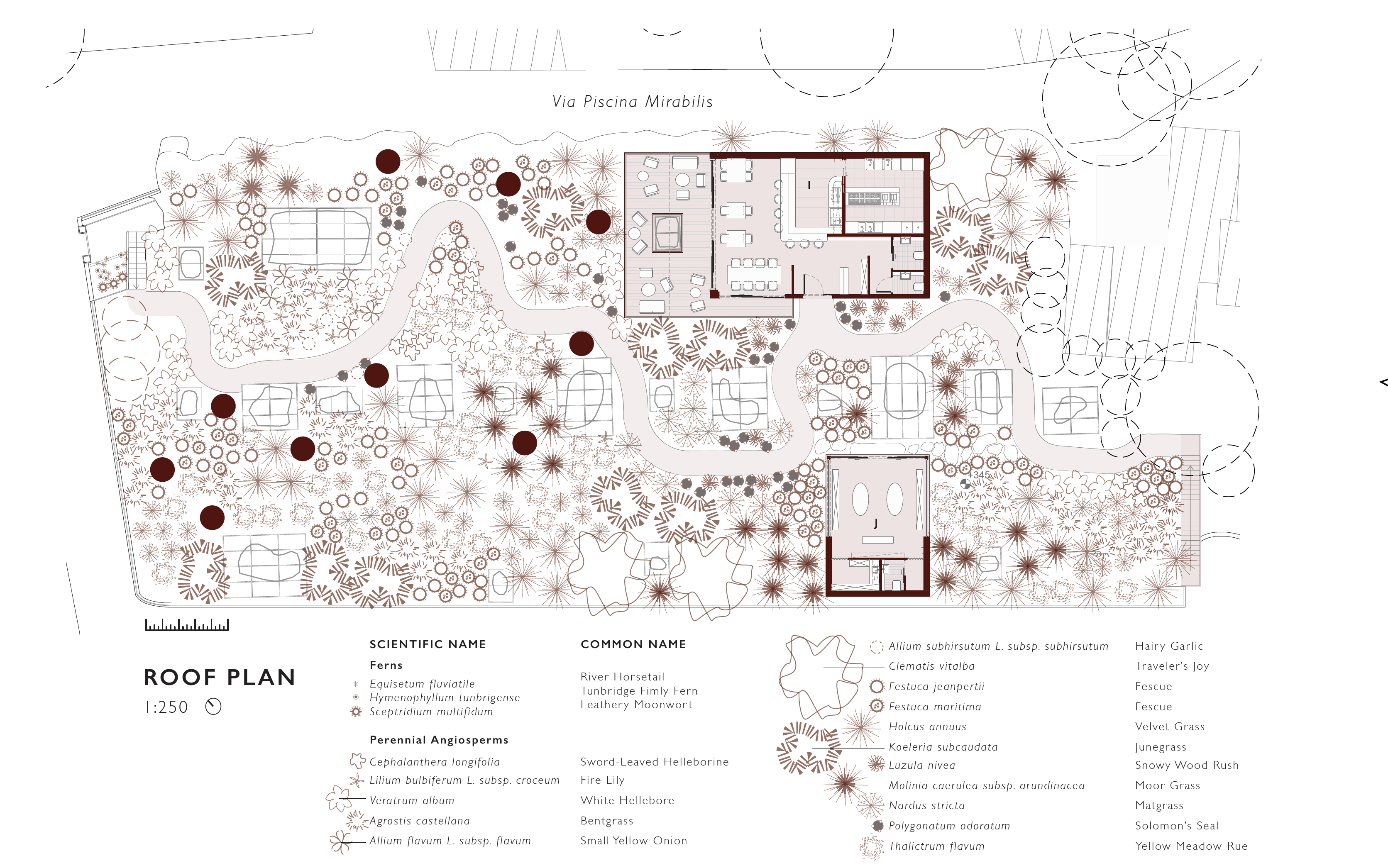
*rendering by team member, Rebecca Pepl
The ancient and ruined Roman reservoir, Piscina Mirabilis, is a historic connection between the physical environment and cultural heritage through movement of water. It was built by Emperor Augustus in the 1st century AD, in order to feed with drinking water the headquarter of his western Mediterranean war fleet. It was dug out a tuff hill, and it is based on a regular grid of pillars and arcs, with vaulted ceilings. This design competition called for the reuse of this reservoir into a contemporary art museum in order to bring life back into the ancient world.
Movimento Intrecciato signals the moment of interconnection between the modern and ancient world. Users are taken through a spatial procession which showcases the main components of ancient Roman aqueduct systems. Beginning with a tunnel into the heart of the existing space, they are met with a grand opening in the center with glimpses of light trickling from the existing openings above. Visitors then travel through three floors of galleries along the arcade and reach a rooftop terrace. This rooftop garden represents the ancient watershed’s path through the aqueduct system, containing sculptures which provide cues to the location of major cities in relation to water system — visually returning visitors back to the local context.
concept + existing ruin conditions




*images courtesy of ReUse Italy
plans




